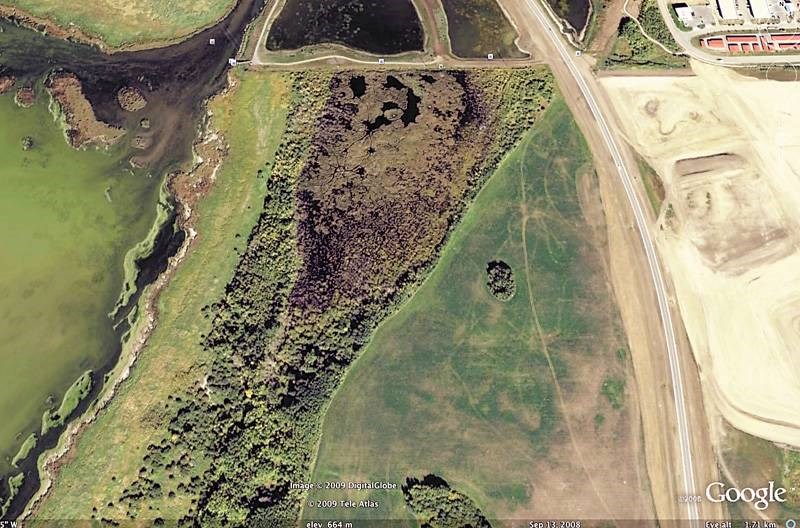A million-dollar interpretive trail is coming to Big Lake this year thanks to a new fund that honours a renowned construction leader.
Ducks Unlimited and PCL Construction announced the creation of the John E. Poole Conservation Fund Wednesday morning in Edmonton. The $5-million fund, named after construction magnate John Poole, will help preserve wetlands throughout the province.
Ducks Unlimited has already raised $1 million for the fund from various sources including the Poole family, said Dave Kay, St. Albert resident and the group's operations manager for Alberta. When finished, about $4 million of the fund will support ongoing wetland conservations projects in the province.
"As a legacy to Mr. Poole, we are going to construct an outdoor interpretive facility at Big Lake," said Kay. This facility, also named after Poole, will consist of an interpretive boardwalk built through the Riel wetland next to the lagoon by the Big Lake Environment Support Society's (BLESS) viewing platform. Construction is set to start this fall at a cost of about $1 million.
This fund will be a lasting tribute to a man who loved life, said Barbara Poole, John's wife, in a press release. "This legacy is not so much about John; it's a legacy that we can all contribute to so that we can share with others the beauty around us for a very long time."
Businessman, outdoorsman
John Poole sold his construction company to its employees in 1977, according to a press release. That company, now known as PCL Construction, is the biggest construction contractor in Canada.
Poole was an avid outdoorsman, known for his love of fly-fishing and hunting. He was also a philanthropist, donating millions to conservation projects such as Waterton National Park. He was named an Officer of the Order of Canada in 1996 for his record of community service. He died in January 2007.
The Pooles are good friends with St. Albert's Hole family, Kay said, which is why they decided to put the John E. Poole Interpretive Wetland site in the city. "We thought it was an appropriate fit."
Springboard for park
The trail is the first major development to occur in Lois Hole Centennial Park since its creation in 2005, said local observers. The park currently has few amenities apart from some signs.
The trail has been in the works for about five years, said Kay, who's been with the project since its start. Initial work on the path, in the form of soil and water samples, started last winter.
The Riel wetland is a big swath of willows and cattails representative of wetlands throughout St. Albert, Kay said. These wetlands provide shelter for ruddy ducks, red-winged blackbirds and many other species, and also store and filter drinking water.
The trail will have interpretive signs and sampling stations to teach visiting students about the importance of wetlands, Kay said. A proposed pedestrian overpass over Ray Gibbon Drive would link it to the future site of Hole's Greenhouse.
This trail would act as a springboard to future development of the park, said Bill Holtby, city manager for St. Albert. "It's a real hidden jewel," he said of Big Lake, and this trail will make it easier for people to visit it. "It will put Big Lake on the map as a destination for migratory bird-watching."
Kay will hold an open house on the project at the Fraternal Order of Eagles Hall (23 Rowland Crescent) this Thursday from 5:30 to 7:30 p.m.
"I'm very excited about it," he said, adding that he hoped it would kick-start other projects such as the park's interpretive centre. "It's going to be a wonderful destination for folks in St. Albert and Alberta."




